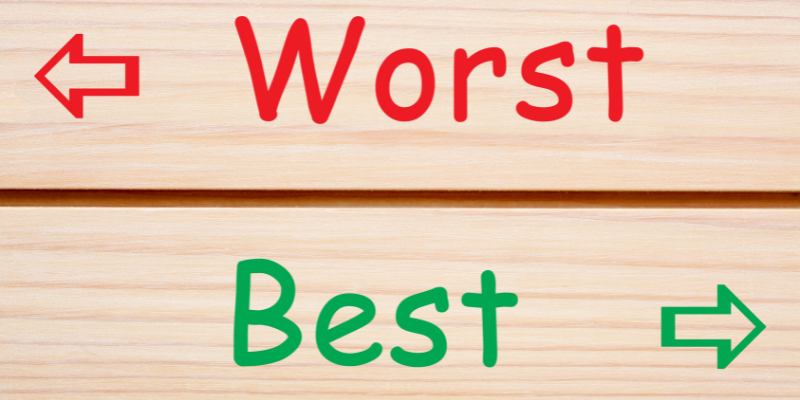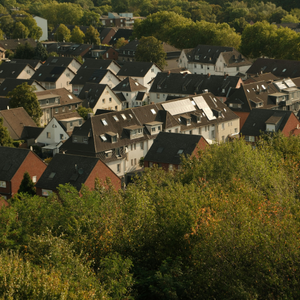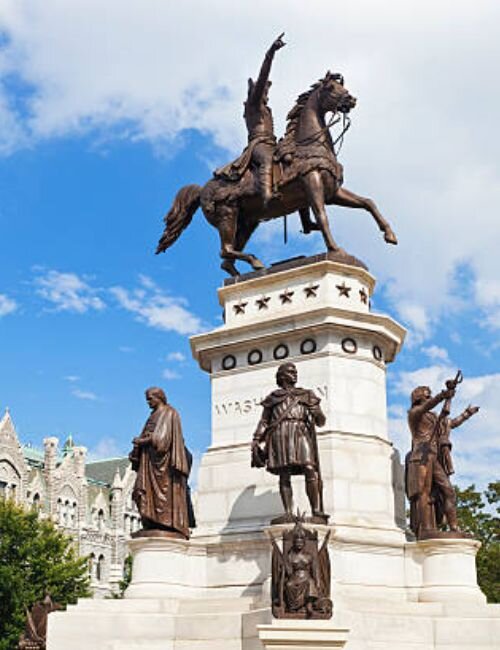
Like many cities, Richmond, VA features a distinct, celebrated history and rich culture. Richmond also features a multifaceted historical narrative uniquely shaped by the recorrido of its diverse neighborhoods and their crime rates. This comprehensive overview by Cash For Houses Girl will help every resident and newcomer to Richmond understand the distinct neighborhoods’ crime rates and the overall value of their home, apartment, or investment. Depending on the purpose of your visit to Richmond—whether it’s a move, investment, or simple curiosity—this overview will help you understand and confidently navigate the city’s safer and less safe environments.
The Impact of Violent Crime on the Community
Richmond, VA, suffers rampant violent crime and the economic and psychological consequences of these crimes: assaults, robberies, and homicides. Richmond, VA, suffers violent crime assaults, robberies, and homicides. It diminishes the sense of confidence, trust, and cohesion in communities. Richmond neighborhoods suffer from violent crime disparity. Geo-mapped crime data enables citizens to take defensive measures and protect their families.
Businesses and investors are also deterred by the economic consequences of violent crime, as they are costly, resulting in a disadvantaged region. To achieve these goals and decrease violent crime, municipalities must collaborate with communities and target violent crime with evidence-based measures. Richmond can foster a culture of vigilance and civic engagement when citizens are empowered to act collaboratively in seeking and implementing safety measures. For communities to be safe and more cohesive, Richmond, VA, should introduce measures that address and respond to the consequences of violent crime (prevention, rapid-response, adequate settlement of affected parties).
Trends in Property Crime within Richmond, VA

In Richmond, property offenses such as larceny, break-ins, and graffiti continue to change over time. Richmond, VA. Especially, certain neighborhoods show distinct property crime activity, as data support some neighborhoods having high crime rates because of factors such as overpopulation and socio-economic struggles. Crime maps are helpful for both citizens and law enforcement to focus and optimize resource distribution for specific high-crime areas. Property crime reduction strategies are usually inclusive of community-oriented policing, neighborhood watch programs, and technology such as surveillance. Moreover, the empowerment of citizens through educational programs can lead to the loss of vandalism and theft because of protective self-measures.
Richmond’s property crime rate necessitates an understanding of the property crime rate to devise useful mechanisms of crime control. Participating in local initiatives raises the spirits of the community while encouraging collective responsibility and ownership of public safety. Focusing on the economic imbalance and the underemployment of individuals mitigates the long-term threats to the safety of individuals in Richmond. Continuous feedback from the community is vital in the mitigation of crime. Working on the Richmond crime map and engaging in initiatives to improve the city’s reputation as a safe and welcoming place increases public safety and reduces property crimes in Richmond, VA.
Identifying High-Risk Zones in Richmond
High crime rates in Richmond, VA, have raised the profile of specific neighborhoods as risk areas. An analysis of crime statistics reveals that downtown Richmond, Oak Grove, and other neighborhoods tend to have higher crime rates. Crime maps, which are vital to residents and prospective buyers in the region, illustrate the neighborhoods that pose the greatest danger. These neighborhoods are described as ‘high risk’. Often, the emergence of high-risk neighborhoods is due to the combination of socio-economic difficulties, including poverty, unemployment, and an environment conducive to crime.
- To foster partnership with the community and deter crime, implement neighborhood watch programs.
- Enhance security and visibility by increasing lighting where street and area surveys indicate potential crime opportunities.
- Community engagement programs aimed at patronage and trust development are encouraged, as are initiatives aimed at community law enforcement.
- Community pride and ownership of public spaces are encouraged through the organization of community clean-up initiatives.
- To foster public trust and support, transparent and privacy-sensitive surveillance is campus-installed.
- Community initiatives aimed at education, job training, and mentorship, which are positively correlated with reduced crime, are encouraged.
- Conflict resolution training workshops are designed to equip community members with the ability to resolve conflicts.
- Establish and promote nighttime customer and employee safe passage routes with local businesses.
- Mobile safety applications designed to instantly alert authorities to crime and suspicious activity are promoted.
- Gardening initiatives designed to increase community interaction and reduce crime by activating under-utilized spaces are encouraged.
Richmond can rezone its high-risk areas for development and strengthen community safety strategies by fully involving the community in a wide array of safety programs.
Factors Contributing to Crime in Richmond neighborhoods
A comprehensive analysis is integral to discerning the factors behind Neighborhood Crime in Richmond. Based on the data, we know that economic factors are the primary contributors to Neighborhood Crime. A poor economy and sky-high unemployment levels in Richmond’s Downtown and Oak Grove regions are primary factors in the commission of offenses in the area. Crime is exacerbated by a lack of education and healthcare access in economically poor sectors of the city. Moreover, the presence of gangs and the drug economy contributes to the violent offenses and property crimes in the area.
As Richmond’s Downtown and Oak Grove economically poor sectors are Public Safety High Risk Zones, the lack of community cohesion and the absence of social support nets in these Public Safety High Risk Zones increase the levels of isolation in these zones. This isolation leads to Helplessness Syndrome in residents as they are cut off from social support networks. Furthermore, poor urban design, such as a lack of light and public neglect of the area, fosters a climate in which crime can thrive. Richmond’s complex social factors require investment in social infrastructure and crime control, which will enhance the social quality of life of the community and residents. Sustainable improvement to the social and physical fabric of the Public Safety High Risk Zones of Richmond, transforming them to Safe Richmond neighborhoods, can be achieved through community engagement.
Exploring the Safest and Worst Neighborhoods in Richmond, VA
We examine Richmond, VA, as the best place to live based on data on safety, convenience, and overall quality of life. Richmond, VA, is a mix of historic districts, family neighborhoods, and developing districts. Before making your decision, note that many new districts in Richmond, VA, are currently being developed. Richmond, VA, best and worst districts, best overall feature, community inclusiveness, and access are provided.
| Neighborhood | Key Features | Community Engagement | Accessibility & Convenience |
|---|---|---|---|
| The Fan District — Best | Historic Richmond homes, high walkability, popular dining & retail | Strong neighborhood groups, regular community events | Excellent access to VCU, Downtown, public transit routes |
| Museum District — Best | Safe residential streets, museums, family-friendly atmosphere | Active civic associations, block groups, local initiatives | Easy access to I-195, transit, grocery stores, and schools |
| Westover Hills — Best | Suburban-style living near the James River, stable property values | Highly engaged residents, community markets, family events | Quick commute to Downtown; well-connected to Forest Hill Ave |
| Carytown — Best | Shopping district, restaurants, walkable lifestyle | Strong mix of business and resident participation | Top-tier walkability with bus routes and central city access |
| Church Hill — Mixed | Historic architecture, revitalized dining scene, improving safety | Community-driven restoration projects and active volunteers | Good access to Downtown; moderate transit options |
| Northside — Mixed | Diverse housing stock, growing redevelopment areas | Neighborhood associations improving parks and safety | Varies by area; increasing connectivity to Downtown & I-95 |
| Southside — Mixed/Worst Areas | Affordable homes, but uneven development and pockets of crime | Community programs growing but inconsistent involvement | Accessibility varies; some areas have limited transit |
| Gilpin Court — Worst | Higher crime rates, concentrated public housing | Limited engagement due to socioeconomic challenges | Fewer amenities nearby; restricted transportation options |
| Mosby Court — Worst | Crime concerns, aging housing, limited amenities | Low participation; ongoing outreach by local groups | Limited transit access and fewer walkable services |
As a prospective resident of Richmond, VA, picking which neighborhood to live in comes down to considering your budget, priorities, and lifestyle. Safely walking and accessing various amenities are fundamental. The aforementioned suburbs are a great starting point. Use this reference in your attempt to limit your choices and define each locality’s unique amenities as you move to a new area or visit Richmond.
Characteristics of Low-Crime Areas

Richmond’s safest neighborhoods possess socio-spatial qualities that create atmospheres of safety and security. These low-crime neighborhoods are characterized by strong civic engagement and community partnership models. Here, community policing works to foster safety. These neighborhoods are characterized by strong collective efficacy, where residents strengthen and unify their community to build social networks. Community design promotes safety by providing ample and well-lit public features, such as parks and streets, which promote community engagement as well. Furthermore, economic self-sufficiency is crucial, as homeowners, with a stake in their community, are effective at lowering crime rates. This pride in ownership, coupled with high rates of home value stability in these neighborhoods, indicates a strong commitment to their safety.
The absence of crime in the neighborhoods mentioned in the previous passage can be attributed to the presence of educational advantages and certain urban policies. The correlation of educational access and safety can especially be seen in neighborhoods with educational institutions. These neighborhoods have economic stability, which is often reflected in the average home prices, and fosters a sense of community. These areas have, and continue to, implement community-policing practices and support partnerships with members in the communities to enhance the surveillance and technological resources. The combination of community engagement, purposeful, and community-policing practices has made these neighborhoods in Richmond crime-free. The focus and implementation of crime prevention practices have continued to make Richmond’s neighborhoods crime-free and have made them some of the safest in the country.
How to Stay Safe and Avoid Crime in Richmond, VA
Fostering safe community interaction calls for a heightened focus on risk mitigation. Review Richmond’s crime statistics and exercise caution in certain high-risk zones. Knowledge of the crime norms allows individuals to make informed decisions on the routes taken. Home safety cannot be overlooked. Implement measures such as durable locking mechanisms and cameras to diminish the chance of opportunistic crimes. Criminals are discouraged from targeting well-lit houses, and community relationships establish a vigilant neighborhood. Participatory neighborhood watch programs greatly improve the safety of the community.
| Strategy | Description | Community Role | Safety Benefits |
|---|---|---|---|
| Neighborhood Watch | Organized group of residents monitoring local activity. | Participate in regular meetings and report suspicious activity. | Reduced crime rates and increased community awareness. |
| Improved Lighting | Installation of adequate street and home lighting. | Ensure personal properties are well-lit and support city lighting projects. | Deters criminal activities by eliminating dark areas. |
| Secure Property | Use of locks and security systems on homes and vehicles. | Regularly check and update security measures. | Prevents unauthorized access and reduces theft. |
| Community Engagement | Organizing events and activities to foster unity. | Attend and promote local events that strengthen ties. | Enhances trust and cooperation among residents. |
This table summarizes the various strategies that residents and communities in Richmond can employ to enhance safety and mitigate crime risks.
Resident Experiences in Safe Richmond Areas

Richmond’s safest neighborhoods are home to numerous residents who share similar positive experiences living in a close-knit community where everyone looks out for one another. Such community togetherness results in substantially low crime rates in Richmond’s neighborhoods, which are also known for their warmth and friendliness. Using a Neighborhood Map, residents and newcomers can easily locate these areas and explore the local culture. Community gatherings such as farmers’ markets and art festivals celebrate the intertwining of this community’s culture. Residents enjoy easy access to public amenities such as parks, libraries, and recreational centers, enhancing the living experience in these prestigious neighborhoods. In addition to safety and educational opportunities, residents can engage in positive health and recreational activities.
Parents around the community love being able to enjoy these aspects of the neighborhood. The community offers safe routes to school and active engagement of parents in school activities, which enhances a child’s learning experience. The community has also shown that these safe neighborhoods are financially stable and in demand, as evidenced by the steady increase in property values, low rental prices, and growing interest from cash home buyers in Richmond or in nearby cities. Other neighborhoods in Richmond admire such community dedication, as is evident in their own growing areas. Residents of Richmond share the importance of partnership in the community to achieve a common goal: a safe, thriving neighborhood.
Richmond’s crime statistics are essential for residents, potential buyers, and community members to understand the state of safety in the area. Throughout the city, crime statistics and safety levels can vary, especially when analyzing data for different neighborhoods. Additionally, the community’s proactive efforts can be highlighted, and areas in need of improvement can be identified with ease. Downtown Richmond has higher crime rates; however, the cities surrounding Richmond, like Bellevue and Windsor Farms, report lower crime rates. There exists a stark difference in the level of safety offered. Engaging with and paying attention to community safety news allows citizens to make educated decisions in different areas of public life, contributing to overall safety. For homeowners looking to sell, a company that buys homes in Mechanicsville or in nearby cities can also provide guidance, helping residents navigate property decisions in light of neighborhood safety and market conditions.
FAQs
What types of crime affect Richmond, VA, and how do they impact the community?
Richmond, VA, deals with issues regarding violent and property crimes. There are violent crimes like assault, robbery, or homicide, which, besides creating distrust in a community, are also major factors in affecting property’s worth and influencing residents’ mental well-being. There are also property crimes that a lot of people suffer from, like theft or vandalism, which have a negative impact on people’s overall satisfaction with life. The understanding of these dynamics in crime is beneficial for forming strategies that can be used in crime prevention.
How can residents and newcomers use crime data to make informed decisions in Richmond, VA?
The maps and data analyses illustrating the frequency and prevalence of both violent and property crimes provide residents and newcomers with the opportunity to evaluate the safety and security of a particular neighborhood. Such analytical tools assist individuals in making rational decisions about residency, visitation, or investment in a neighborhood.
What are some of the safest neighborhoods in Richmond, VA, and what makes them secure?
Richmond, VA, is characterized by neighborhoods that foster community integration, partnership with law enforcement, and economic prosperity. Contrasts in these traits, and thus, crime rates, can be observed in areas such as Bellevue and Windsor Farms. Additional community-centered investments seen in these areas include the presence of public infrastructure and active neighborhood watch programs.
What strategies are suggested to reduce crime rates in high-risk zones of Richmond, VA?
Mitigating illegal activity in volatile regions requires geographically-focused crime data analytics, community-driven crime prevention activities, crime prevention activities aimed at socioeconomic inequality, and urban planning improvements such as infrastructure and lighting. Integrated community policing and neighborhood watch programs are also important in these activities.
How can Richmond residents contribute to improving safety in their communities?
Participants in neighborhood watch programs, keeping their homes adequately lit, accessing data regarding neighborhood crime statistics, and taking part in community activities can all work individually and in conjunction to strengthen community safety. A community will have a greater sense of safety if its occupants work together to improve social relations and advocate for safer community features.
Looking to sell your home in Richmond, VA? Whether your property is in one of the city’s best neighborhoods, like The Fan District or Carytown, or in areas facing challenges, Cash For Houses Girl can help you sell quickly—without costly repairs or hassle. We provide fair cash offers, handle all the details, and make the process seamless, no matter the neighborhood. Ready to sell or have questions? Contact us at (804) 376-8771 for a no-obligation offer and get started today!
Helpful Richmond Blog Articles
- Understanding Richmond, VA, Vacant Property Regulations
- Sale Of Inherited House With Multiple Owners In Richmond, VA
- Sale Of A Home Amidst A Pending Lawsuit in Richmond, VA
- Free Home Appraisal Strategies In Richmond, VA
- Can An Executor Sell Property In Richmond, VA
- Selling Your House During Bankruptcy In Richmond, VA
- Title Issues At Real Estate Closings In Richmond, VA
- Selling A Water-damaged House In Richmond, VA
- How Much Is Home Staging Cost in Richmond, VA
- Should I Rent My House or Sell in Richmond, VA
- Tax Implications of Selling Home in Richmond, VA
- How to Sell an Investment Property in Richmond, VA
- Appraisal to Closing in Richmond, VA
- Safest and Worst Neighborhoods in Richmond, VA
- Richmond VA Neighborhood Map
- Richmond VA Property Tax Rate

